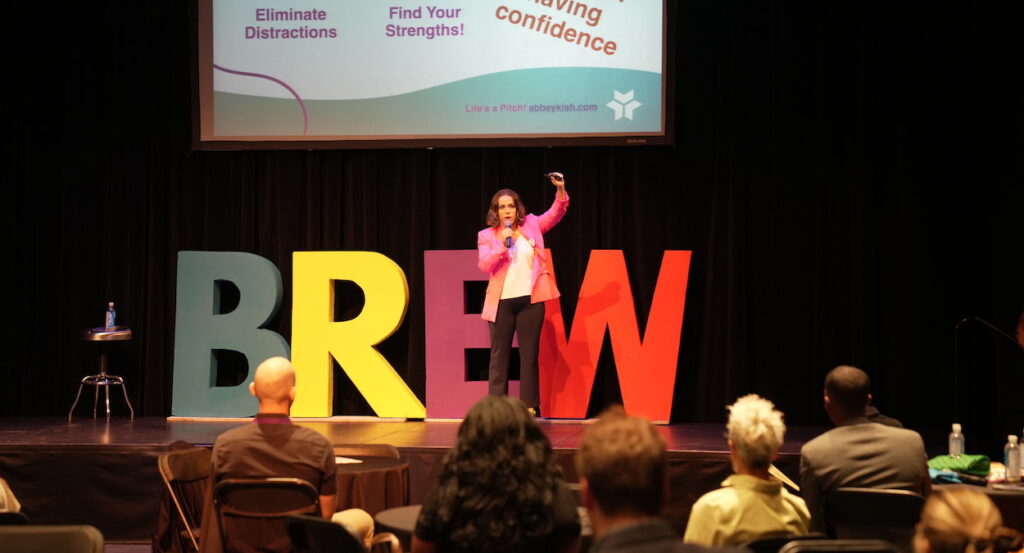You have the perfect idea for the startup. Maybe you’ve even gotten your business going and developed a product or service that’s going to change the industry. You’re ready to take the next step, but you need to find investors to back your dreams. What you need now is an entrepreneur elevator pitch that connects with investors.
Abbey Kish, founder and CEO of Kish Consulting, has seen firsthand how an entrepreneur’s pitch can make or break their fate. Kish’s goal is to help entrepreneurs create pitches that go beyond just the product. During this year’s Baton Rouge Entrepreneurship Week (BREW), Kish shared tips on how to create and deliver a pitch that excites investors.
4 Steps for Winning Pitches
Kish’s presentation outlined four key steps entrepreneurs can focus on before they present to investors.
- Establish trust: Tell stories that help investors understand your vision and how your business will transform the industry.
- Invite investors to be a part of your story: Investors are committing not only to your business but to you as a founder. Let them into what drives you so they can understand and participate in your mission.
- Create compelling content: Even an experienced speaker like Kish puts time into tailoring each talk to the specific audience. Do the same for any investor (or potential customer) you’re trying to win over.
- Define your “aha” statement: What’s the one thing you want potential investors to take away from your presentation? Make sure you emphasize that.
When you follow these steps, you’re more likely to build trust and provide a memorable experience. Read on to get Kish’s advice for creating that environment.
Establish Trust to Get Their Attention
What do investors look for in a startup? There are countless ways to answer that question, but one thing is always true: You need a good pitch that quickly highlights your company, its purpose and your passion. In short, you need to win their trust in you and your brand.
“Trust matters, because you never know who you’re talking to,” Kish says.
Building this trust requires preparation. Research who you’re pitching to and what they value in startups and founders. You want your pitch to reflect your business and appeal to what these investors value. When you can create this connection, two things happen:
- People see your full potential. Don’t be afraid to be vulnerable. Tell stories that help potential investors see your vision and how you plan to change or disrupt your industry. Invite them in so they emotionally invest in your journey.
- People get excited about your success. When people understand your vision and your potential, they can’t help but want to see you succeed. “How great would it be if you spoke to an investor for your startup, and they wanted to be a part of your story?” Kish says.
How Do You Establish Trust?
Kish highlighted three rules entrepreneurs should follow to build trust with investors.
The first rule for establishing trust is to practice “selfless communication, which means putting your audience and your listener first,” she says. This communication is about building a rapport with your audience to learn more about their needs, wants and pain points.
“I’ll tell people all the time: If you’re not putting your listener first, you should not be speaking,” Kish says.
The next rule is to create compelling content, which can help explain what your business does and where your passion comes from. Kish cites Aristotle’s emphasis on speaking before talking. Her process starts with research and brainstorming. “I go to a whiteboard, and I brain-dump everything that I can possibly think about that topic. I did that for today,” she told the BREW audience. “Even though I know what my content is. And I’ve been giving it a long time. This is a new audience, and I’m here for you guys.”
The final step in building trust is defining your “aha” statement — a concise and impactful statement that summarizes your argument and sticks in the mind of your audience. These three steps are “a process you should go through every single time that you talk, which I know sounds like a lot. But it’s important,” Kish says.
Create an Experience for Investors
Whether you are pitching your story to investors or giving some other kind of presentation, Kish says, you know you’ve won them over when they momentarily forget where they are because they’re so immersed in what you’re saying.
To create a memorable experience for customers, Kish says, entrepreneurs need to do two things: Eliminate distractions and find your strengths.
Distractions are anything that can detract your audience from your pitch or presentation. This can include pacing back and forth, using filler words or talking with your hands. “The same reason why we struggle with filler words is the same reason why a listener has a hard time keeping up: All filler words are is our mouth moving faster than our brain. We’re talking too fast,” Kish says.
When you know your strengths, meanwhile, you always have something to fall back on when you’re nervous. And your audience gets a window into what makes you unique and special. “You never get rid of nerves, but you develop courage,” Kish says. “So what I teach people is how to have that inner self-talk despite how scary the situation [is], no matter how high the stakes are.”
When you remember the why of your business and tap into that passion that you have for it, you’ll be able to deliver an entrepreneur elevator pitch that investors can relate to. Courage isn’t the absence of nerves but the ability to pitch your ideas despite them.
“Instead of thinking about everything that’s on the line,” Kish says, “I’m thinking about my listener, I’m thinking about the value that I can provide to them.”




